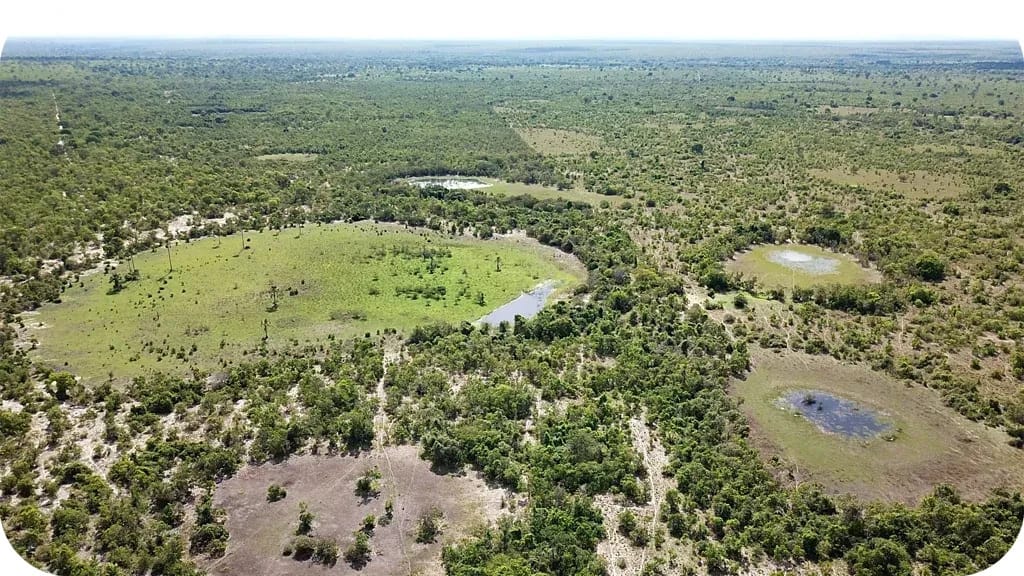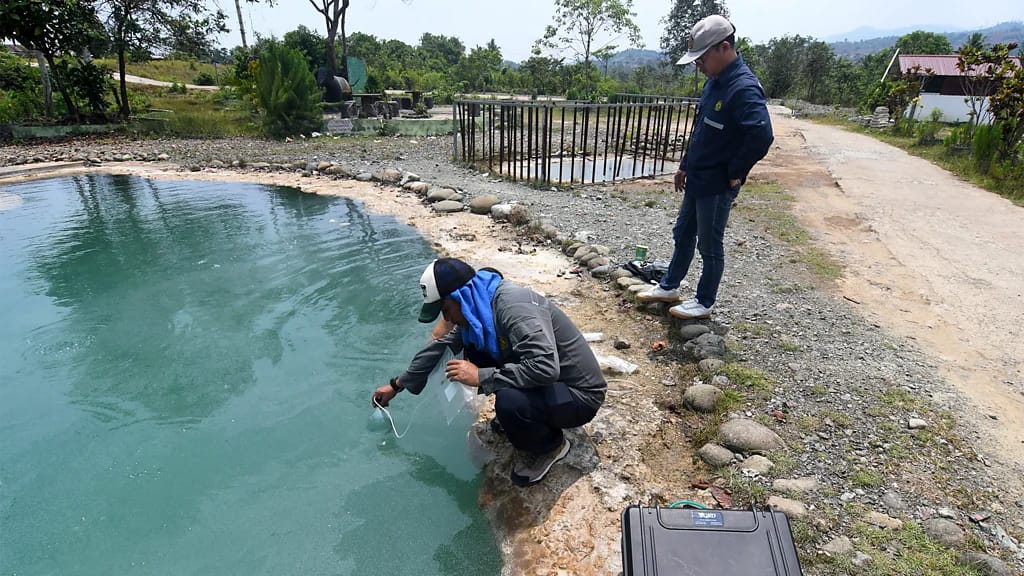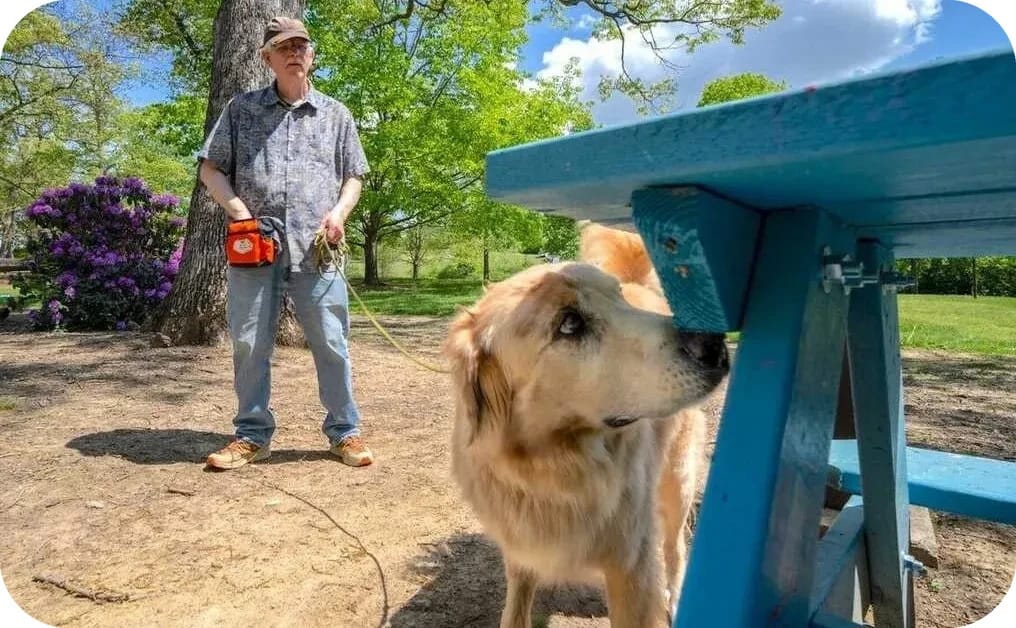- Daily Upsider
- Posts
- 🌞 Precious ‘White Gold’ Fuel
🌞 Precious ‘White Gold’ Fuel
Daily Upsider - Tuesday, July 29th 2025
Tuesday, July 29th, 2025
Good morning! 🌞
It doesn’t matter where you go—chicken wings always find their way onto the menu. From spicy buffalo to honey barbecue, garlic parmesan to soy-ginger glaze, these crispy little wonders have gone global. And today, July 29, we celebrate their greatness.
National Chicken Wing Day is the perfect excuse (as if we needed one) to indulge. Whether you're grabbing a bucket from your favorite spot or trying a new recipe at home, it’s a day to get messy, go big on flavor, and maybe challenge a friend to a little heat-level showdown.
No matter how you like your wings—classic, baked, fried, or air-fried—there’s one rule: enjoy them to the fullest. 🍗
Today’s Upside
Health Sciences
Precious ‘White Gold’ Fuel

Sometimes called 'fairy circles', circles such as these in Brazil can form when high-pressure hydrogen causes land to rise then sink (Credit: Alain Prinzhofer)
Naturally occurring “white hydrogen” is emerging as one of the most overlooked energy opportunities of the decade. Long dismissed or unknown, this geologically formed hydrogen is now attracting serious interest from scientists, startups, and investors seeking scalable, low-carbon alternatives to fossil fuels. While hydrogen has long been used in refining and chemical industries, the vast majority is currently produced through carbon-intensive processes involving methane or coal. Cleaner options like green hydrogen (via renewable-powered electrolysis) and blue hydrogen (fossil fuel-based with carbon capture) have gained traction, but together still make up only about 1% of global hydrogen production—and remain costly and slow to scale.

A team from Indonesia's energy ministry take samples of natural hydrogen found at a bathing location in the Central Sulawesi Province, Indonesia (Credit: Getty Images)
White hydrogen, by contrast, forms naturally underground through processes like serpentinization—when water reacts with iron-rich rocks. New research suggests it may be far more abundant than previously believed. A 2024 U.S. Geological Survey study estimated between 1 billion and 10 trillion tonnes of white hydrogen could be trapped in the Earth’s crust. Even if just 2% is recoverable, it would be enough to meet global hydrogen demand for two centuries. “That’s more or less a rush,” says geochemist Eric Gaucher, who co-leads a white hydrogen working group at the International Energy Agency. Gaucher left his post at Total to focus entirely on hydrogen and says dozens of companies are now drilling exploratory wells across the U.S., Australia, and elsewhere—with global investment already topping $1 billion. “The hope is to make a big discovery in the next three or four years,” he says. “My dream is that this natural hydrogen can play a role, maybe as oil played in the past.”
The only place currently using natural hydrogen is Bourakebougou, a small village in Mali where it was accidentally discovered in 1987 during water well drilling. It now powers local electricity. Meanwhile, exploration is advancing rapidly thanks to new tools and models. Researchers have identified tectonic mountain ranges, such as the Alps and Himalayas, as likely sources, and studies from the UK and Canada have outlined the conditions that preserve hydrogen deposits. French startup Mantle8, backed by Bill Gates’ Breakthrough Energy, is applying 4D imaging of the Earth’s mantle to locate and monitor underground reserves. “We are convinced there could be really significant [hydrogen] reserves,” says CEO Emmanuel Masini. Still, challenges remain: unknown recoverable volumes, lack of extraction infrastructure, and environmental concerns. Yet early findings are promising—some high-purity reservoirs could emit as little as 0.4 kg of CO₂ equivalent per kilogram of hydrogen, a third of today’s green hydrogen footprint. “Currently, we really have no idea,” says USGS scientist Geoffrey Ellis. But as the pressure to decarbonize grows, white hydrogen may prove to be a rare and natural advantage hiding just beneath our feet.
Environment
Dogs Saving Crops

Fozzie and Scott Hurst of Salem, Virginia, search a park bench for evidence of the invasive spotted lanternfly – credit Clark DeHart for Virginia Tech.
A new field study from Virginia Tech reveals that everyday pet dogs—when trained by their owners—can help detect and prevent the spread of the invasive spotted lanternfly. First discovered in Pennsylvania in 2014, the lanternfly has now spread to at least 18 U.S. states. Its eggs can be laid on nearly any surface, including tree trunks, stone, wood, and vehicles, making accidental transport easy and containment a growing challenge. Early detection is essential, but the egg masses are difficult for humans to spot. That’s where dogs come in.
Dogs possess an extraordinary sense of smell, tens of thousands of times more sensitive than humans’, and can be trained to detect lanternfly egg masses hidden in bark crevices, under stones, or tucked into vehicle undersides. “They often resemble mud smears or lichens and are tucked into bark crevices, cracks, or hidden undersides,” said Mizuho Nita, a plant pathologist at Virginia Tech and co-author of the study. While professional conservation dogs have proven effective, they’re costly and scarce. So the researchers explored a more accessible solution: training pet dogs through owner-led scent detection programs. “With proper training, dog owners can turn their pets into powerful partners for conservation,” said lead author Sally Dickinson, who completed her Ph.D. at Virginia Tech’s College of Agriculture and Life Sciences.
The study enlisted 182 owner-dog teams from across the U.S., using non-viable egg masses and recreational scent training methods. Dogs were first tested in controlled indoor environments and then in outdoor field conditions. The results were striking: dogs identified egg masses with 82% accuracy indoors and 61% outdoors—both outperforming human searchers. Among dogs that passed both phases, 92% successfully located live egg masses with minimal extra training. “These teams demonstrated that citizen scientists and their dogs can play a meaningful role in protecting agriculture and the environment from invasive species,” Dickinson said. With lanternflies already damaging vineyards and orchards, a trained dog sniffing out eggs on a simple walk could mean the difference between containment and costly infestation. In a landscape lacking scalable detection tools, pet dogs may offer one of the most practical solutions available.
Lifestyle
Faster Steps, Longer Life

Richard Sagredo
A new study from the University of Chicago Medicine reveals that older adults can significantly improve their physical function and delay the onset of frailty by making one simple change: increasing their walking speed by just 14 steps per minute. The study focused on seniors classified as frail or pre-frail—a clinical condition marked by vulnerability to illness, falls, and loss of independence. Common symptoms include weakness, fatigue, unintended weight loss, and low activity levels. Since many of these factors are tied to physical inactivity, walking has long been recommended as an easy and accessible intervention. But until now, there’s been little clarity on how fast someone actually needs to walk to see measurable results.
Traditionally, guidelines relied on the “talk test”—encouraging a pace brisk enough to make singing difficult, but conversation possible. While intuitive, it’s not easy to standardize. This new study instead focused on cadence, or steps per minute. Researchers found that walking at around 100 steps per minute—just a modest increase from participants’ usual pace—led to “substantial” gains in endurance and walking distance. Participants, with an average age of 69, took part in walking programs at retirement communities. One group walked at a comfortable pace, while another walked as quickly as they could safely manage. Step data was collected using thigh-mounted devices, and those in the faster-paced group showed clear improvements in functional capacity.
Lead researcher Dr. Daniel Rubin, an anesthesiologist, was inspired by his clinical work assessing older surgical patients. He believed objective metrics like step cadence could offer a more reliable picture of health than traditional questionnaires. To make this approach more accessible, his team developed an app called Walk Test to measure steps per minute with high precision. While not yet publicly available, its algorithm closely matches specialized lab equipment. In the meantime, Rubin recommends using a metronome set to 100 beats per minute to replicate the pace. “Even casual walking had positive effects on our study participants,” Rubin said, “but for those who are able, increasing their walking pace judiciously can yield even greater results.” For seniors aiming to stay independent and active, a slightly quicker walk may be one of the simplest and most effective strategies.

📱 Tech Tuesday: Tame Your Facebook Feed
1-Minute Trick to See More of What You Actually Care About
Feel like Facebook shows you everything except your best friend’s posts? There’s a fix — and it takes less than a minute.
🔧 Hack: Prioritize Who You See First
Go to your friend’s profile → tap the "Friends" button → select "Favorites."
Boom. Facebook will now bump their posts to the top of your feed.
Do this for your top 10 people or pages — goodbye clutter, hello connection.
👉 Try it today and watch your feed transform.
Mind Stretchers
❓️
I have two blades but never bite,
I open wide, then close real tight.
I love to split but never fight—
Snipping through your work just right.
What am I?
Yesterday’s Mind Stretchers:

— top seed! Gerry Moore got this correct first! 🌞
Be the first to send us the correct answer for today’s mind stretcher for a shout-out with the answer tomorrow. Just send us the answer and your name to [email protected]
From the Community
If you have any uplifting stories and experience you might want to share, send those over to [email protected] for the chance to be featured.
Reply